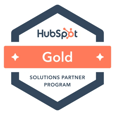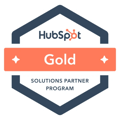Unlock the Power of Pillar Pages: From Creation to Conversion and Beyond
What is a Pillar Page?
In the ever-evolving world of content marketing and SEO, pillar pages have emerged as a cornerstone strategy for boosting visibility and structuring website content effectively. A pillar page is a comprehensive, authoritative page on a website that covers a broad topic in depth and links to related subtopics or cluster content. This type of page serves as a central hub of information on a particular topic, making it easier for users and search engines to find related content in a structured manner.
The Role of Pillar Pages
Pillar pages play a crucial role in organizing content thematically. By doing so, they enhance a website’s architecture, making it more navigable. This approach not only improves the user experience but also optimizes the website for search engines by clustering related content around a central theme. Such organization boosts the site’s authority on the topic, potentially improving search rankings and visibility.
Pros and Cons of Using an Ungated Pillar Page
Ungated Pillar Pages Ungated content is freely available to all users without the need for submitting personal information, such as an email address. Here are the advantages and disadvantages of using an ungated pillar page:
Pros:
- Increased Traffic and SEO Benefits: By making the content freely accessible, ungated pillar pages can attract more visitors. This increased traffic, combined with comprehensive, authoritative content, can significantly boost the page's SEO performance.
- Enhanced User Experience: Users can access information without the barrier of a signup form, leading to a smoother, more engaging user experience. This openness can also build trust and authority, positioning your brand as a helpful resource.
- Wider Content Distribution: Ungated content can be more easily shared across social media and other platforms. This openness can lead to increased brand exposure and content virality.
Cons:
- Limited Lead Generation: Without the requirement to fill out a form, direct opportunities for lead capture are reduced. Businesses may find it challenging to collect user data for lead nurturing.
- Difficulties in Content Monetization: Ungated content offers fewer opportunities for monetization directly through the content, as it does not capture detailed visitor information for upselling or cross-selling.
Pros and Cons of Using a Gated Lead Magnet
Gated Lead Magnets Gated content requires users to provide personal details to access the content. Here are the pros and cons:
Pros:
- Enhanced Lead Generation: Gating content is an effective way to gather leads. Users who are willing to exchange their information are often more interested and qualified, which can enhance lead quality.
- Better Audience Insights: The data collected from gated content can provide valuable insights into the audience, helping businesses tailor their marketing strategies more effectively.
- Potential for Personalized Marketing: With detailed user information, businesses can execute more targeted and personalized marketing campaigns, potentially increasing conversion rates.
Cons:
- Reduced Reach and SEO Impact: Gating content can limit the number of people who interact with your content since not everyone is willing to provide personal details. This reduction in traffic can also negatively affect the SEO potential of the content.
- User Experience Barriers: Requiring information in exchange for content can deter users, potentially harming the user experience and brand perception.
- Higher Expectations: When users provide their information, they typically expect high-value content in return. If the content does not meet their expectations, it can lead to dissatisfaction and harm the brand's reputation.
Choosing between an ungated pillar page and a gated lead magnet depends largely on your strategic goals. If the priority is to maximize reach, enhance SEO, and build brand authority, ungated pillar pages are the way to go. However, if the focus is on generating qualified leads and gathering detailed audience insights, gated content might be more appropriate. Each approach has its merits and can be effective in different contexts within a digital marketing strategy.
Should You Include an Option to Email a Copy of the Pillar Page?
Offering users the option to email themselves a copy of the pillar page content can be an effective way to bridge the gap between ungated and gated strategies. This feature allows users to access the content immediately and freely on the website, while still providing an opportunity for the business to capture email addresses. Below are the pros and cons of including this option:
Pros:
- Enhanced User Convenience: By allowing users to send themselves a copy of the content, you cater to those who may want to read it later or offline, enhancing the overall user experience.
- Lead Capture Opportunity: This feature can serve as a soft lead capture mechanism. It's less intrusive than traditional gated content since the primary content remains accessible to all, but still allows for the collection of email addresses.
- Increased Engagement Opportunities: Once you have the user's email, you can engage them further through follow-up emails, newsletters, or personalized content offers, increasing the chances of converting them into loyal customers or clients.
Cons:
- Potential Overhead and Complexity: Implementing a system to send emails can add complexity and require additional resources or technology, such as email automation tools or integration with your website's backend.
- Privacy Concerns: Any time you collect email addresses, you must be mindful of privacy laws and regulations, such as GDPR. You need to ensure that your process is compliant, including proper consent mechanisms and privacy notices.
- Lower Perceived Value: Some users might perceive the content as less valuable if it’s too readily available. The exclusivity of gated content can contribute to a perception of higher value, which might be diluted in this approach.
Including an option to email a copy of a pillar page strikes a balance between accessibility and lead generation. It enhances user experience by providing flexibility in how the content is consumed while still allowing for audience engagement through email capture. However, it's important to weigh the potential complexities and privacy implications against the benefits of increased user engagement and convenience. This feature can be particularly useful in content strategies aiming to build trust and value while gently guiding users down the conversion funnel.
Best Practices for Creating Pillar Pages
Content Depth and Quality: To make your pillar page a credible and comprehensive resource, conduct extensive research to cover all facets of the topic. Organize the content logically, using headers and subheaders to break down sections and make the page easy to navigate. Ensure the writing is clear, concise, and free of jargon to cater to both beginners and knowledgeable readers.
SEO Optimization: Optimize your pillar page by focusing on keywords that are central to the topic, but ensure that their use feels natural and relevant. Tailor the content to the search intent of your target audience to increase its visibility and effectiveness. Technical aspects, such as mobile responsiveness and fast load times, are crucial for both SEO and user experience.
Visuals and Media: Incorporate relevant visuals like images, charts, and infographics to break up text and enhance understanding. Videos can be particularly effective in explaining complex concepts or demonstrating products or services. These elements can make your pillar page more engaging and shareable.
Integration with Overall Content Strategy
Pillar pages should not stand alone but be integrated into your broader content strategy. They are potent tools for guiding visitors to other related content, enhancing internal linking, which boosts SEO. They also serve as an educational platform that can nurture leads along the customer journey. By linking to specific blog posts, FAQs, and other related articles, pillar pages help create a cohesive narrative around your brand's expertise.
Tools and Resources for Building Pillar Pages
Several tools can aid in the creation of effective pillar pages:
- Keyword Research: Tools like Ahrefs or SEMrush can help you identify the right keywords and topics that your target audience is searching for.
- Content Management: WordPress and HubSpot offer robust platforms for creating and managing pillar pages, with various plugins and integrated tools to enhance SEO.
- Design and Media: Canva is excellent for creating custom graphics, while tools like Adobe Spark or Venngage can help design engaging infographics and visuals.
Metrics to Measure the Success of a Pillar Page
To gauge the effectiveness of your pillar page, track the following metrics:
- Page Views and Traffic Sources: Understand how many visitors your page is attracting and where they are coming from.
- Average Time on Page: A higher average time on page indicates that visitors find your content engaging and valuable.
- Bounce Rate: A low bounce rate on a pillar page suggests that visitors are finding the content relevant and are more likely to explore other parts of your website.
- SEO Rankings: Monitor how your pillar page ranks for targeted keywords and its overall impact on your site’s domain authority.
- Lead Conversion Rates: If applicable, track how many visitors turn into leads by engaging with calls-to-action or downloadable content on the page.
Updates and Maintenance
Regular updates are crucial to keeping your pillar page effective and relevant. Schedule quarterly reviews to check the accuracy of the content and refresh outdated information. Monitor industry trends and advancements to ensure your page remains a leading resource. Additionally, continually enhance the page based on user feedback and changing SEO practices to maintain its authority and effectiveness.
Conclusion
Pillar pages are a foundational element in any content marketing strategy, offering a blend of in-depth knowledge, SEO enhancement, and user engagement. Whether you choose to go with ungated or gated content, or even a hybrid approach that includes emailing the content, the key is to align your strategy with your business goals and audience needs.
Ungated pillar pages maximize accessibility and SEO benefits, promoting widespread knowledge sharing and brand visibility. On the other hand, gated content can be a powerful tool for generating qualified leads and gathering valuable insights into your audience, although it may restrict the reach of your content. Including an option to email the content offers a middle ground, enhancing user convenience while capturing leads in a less intrusive manner.
Remember, the success of a pillar page hinges not just on the content it hosts but also on how well it integrates with your overall digital marketing strategy. It should enhance your site’s structure, link seamlessly with related content, and continually evolve based on analytics and user feedback. Tools and resources are available to assist in building effective pillar pages, but the most critical element is a commitment to quality and relevance.
By following these guidelines and adapting as you learn from real-world interactions with your content, you can create pillar pages that not only draw traffic but also build authority and drive conversions, establishing your website as a go-to resource in your industry.
.webp?width=12693&height=4513&name=Sauce%20Logo%20Dark%20Ht%20(1).webp)

.webp?width=180&height=64&name=Sauce%20Logo%20Dark%20Ht%20(1).webp)










